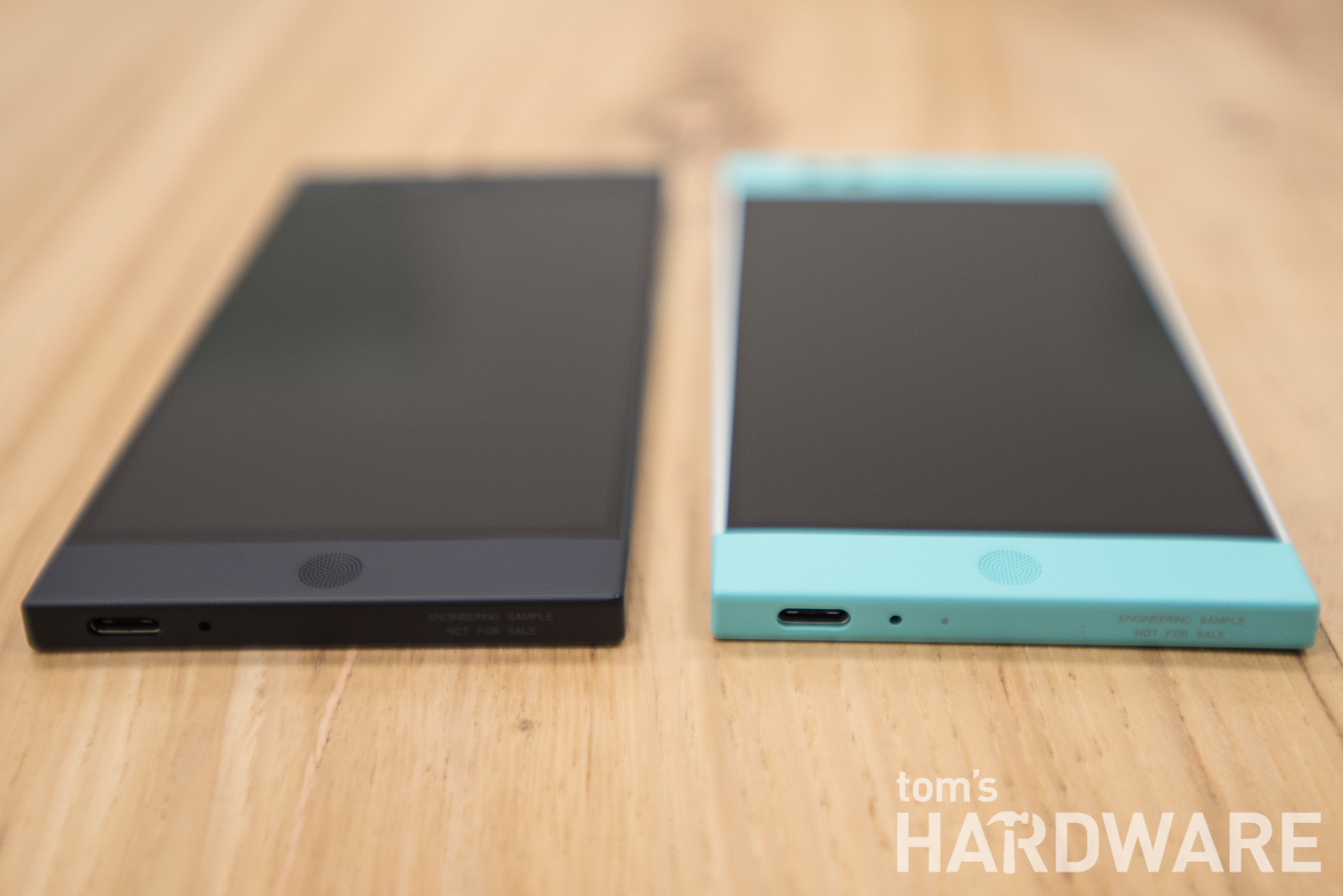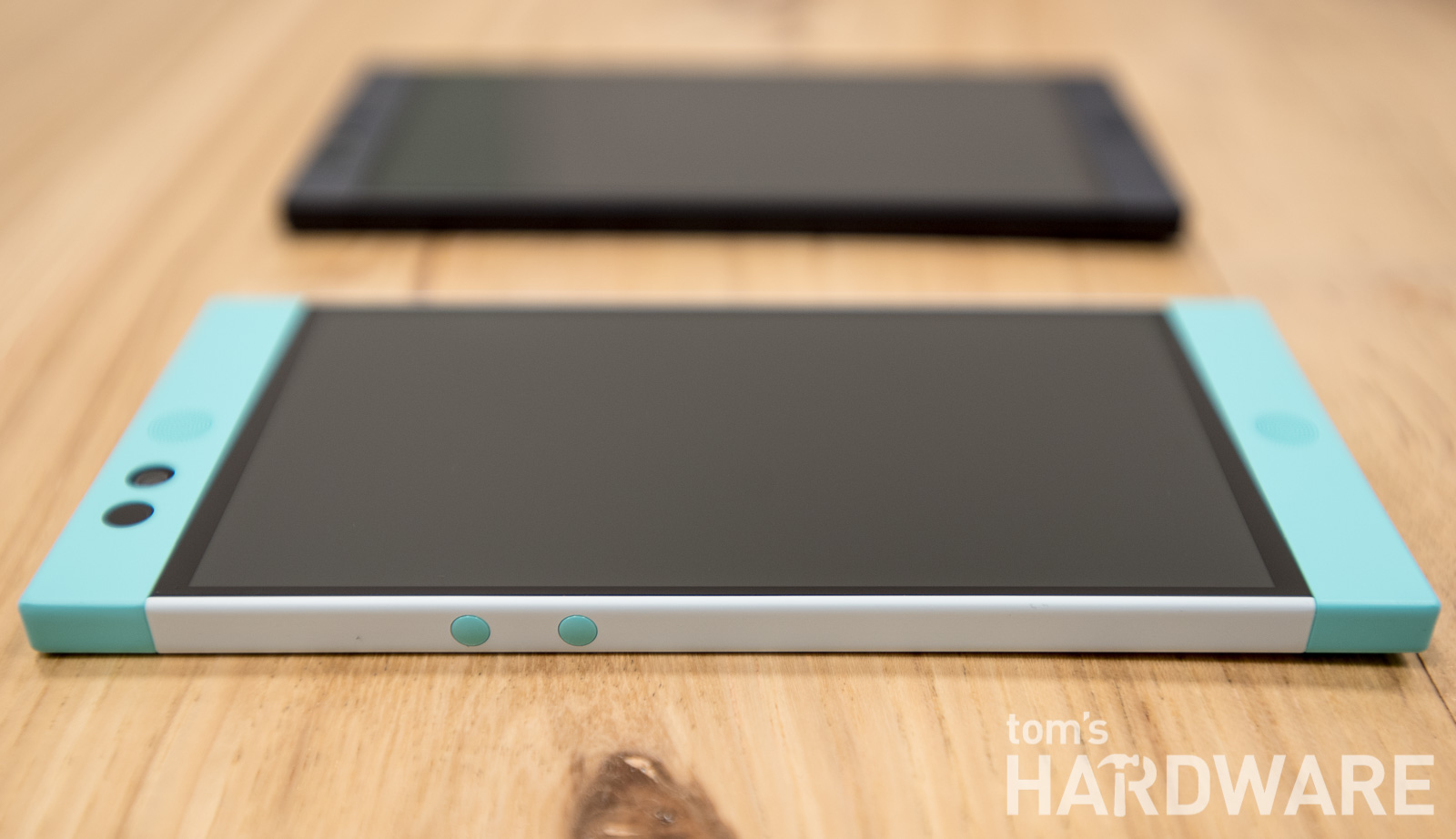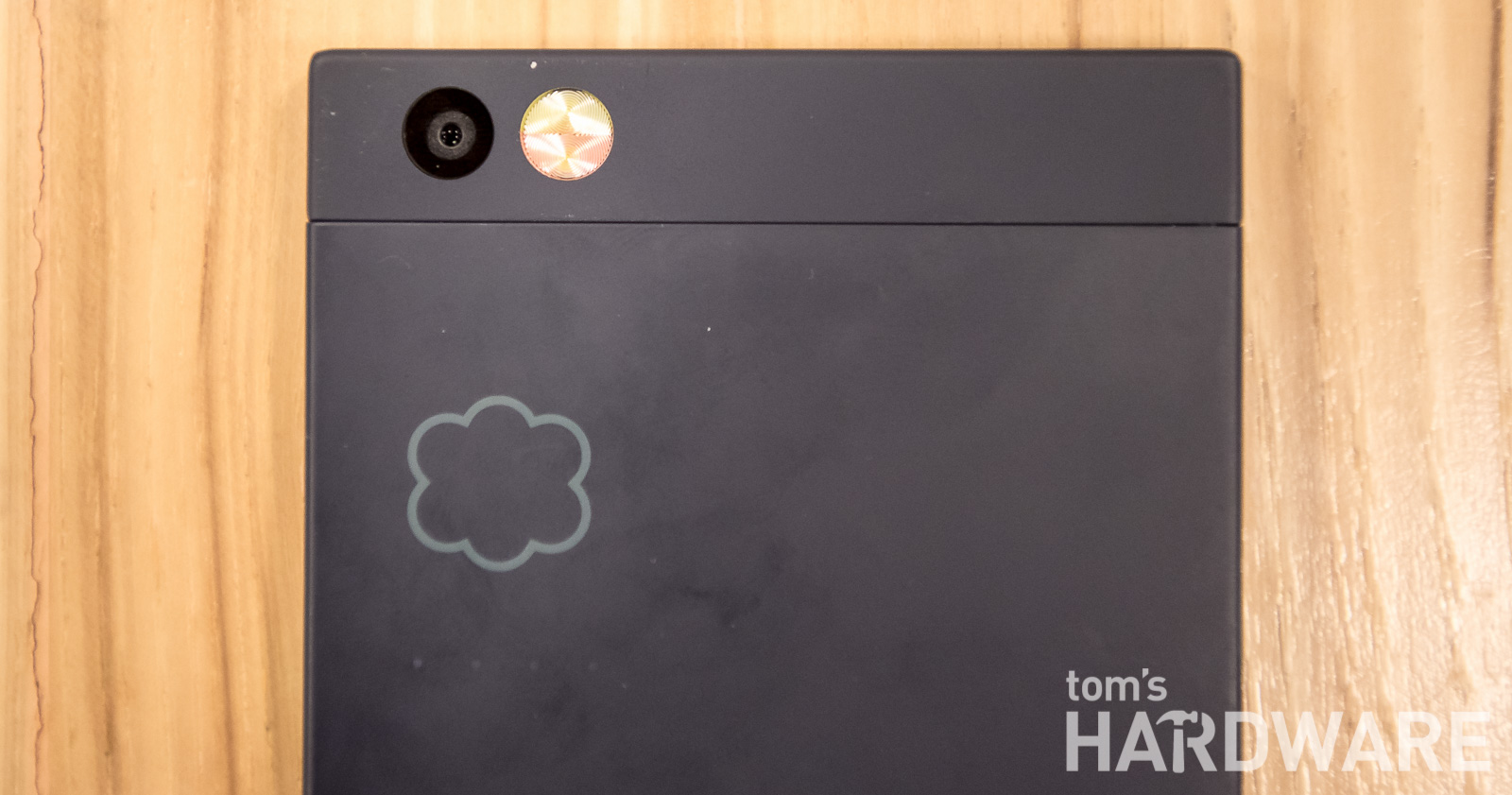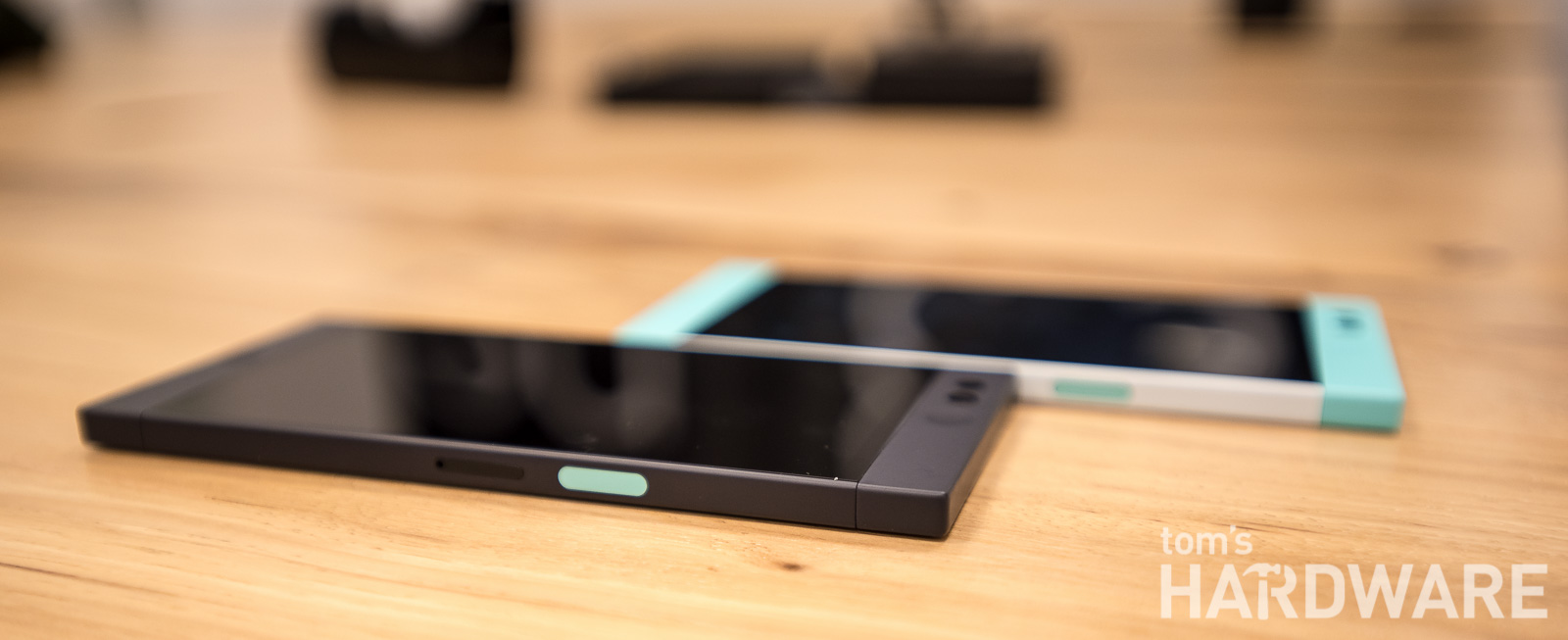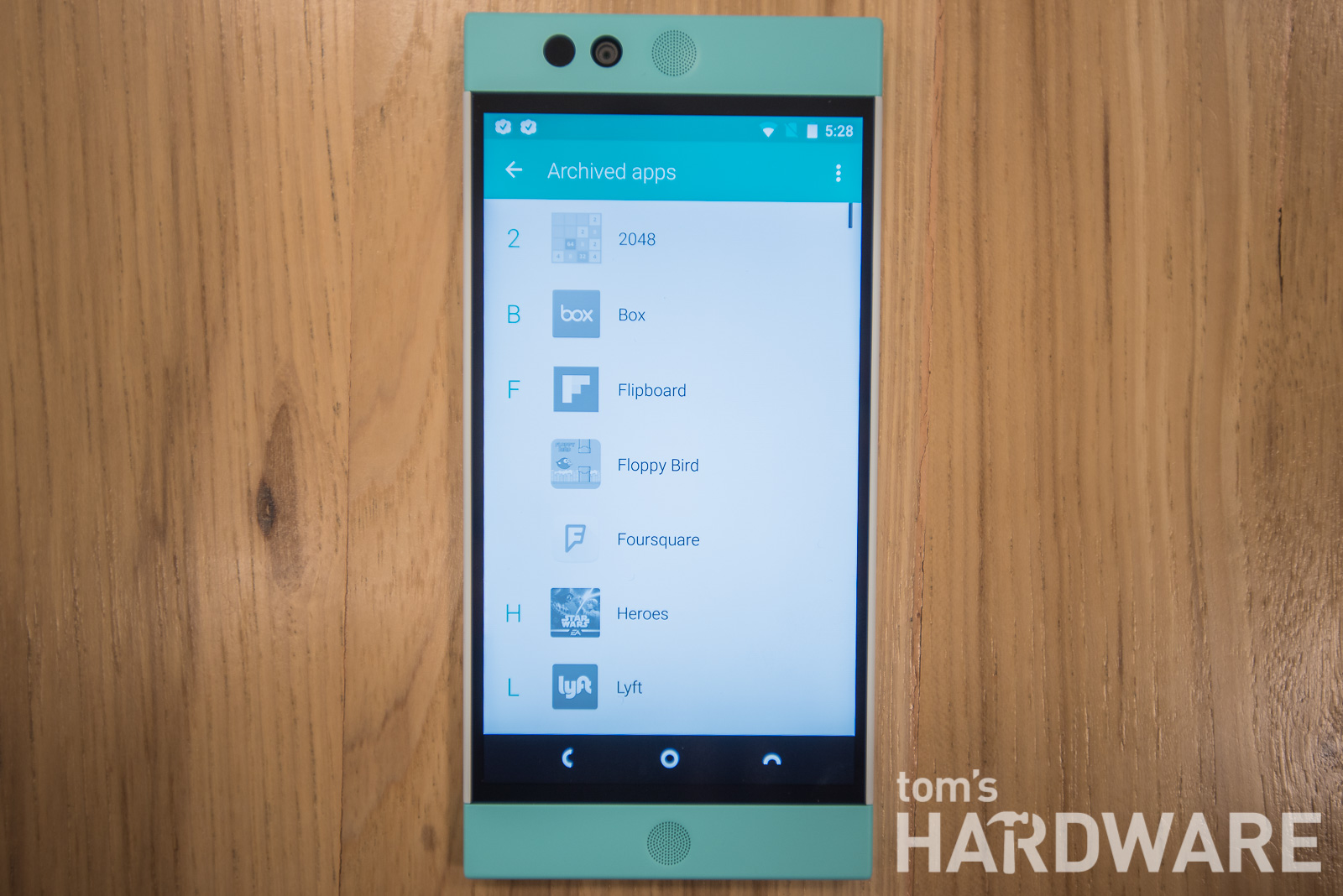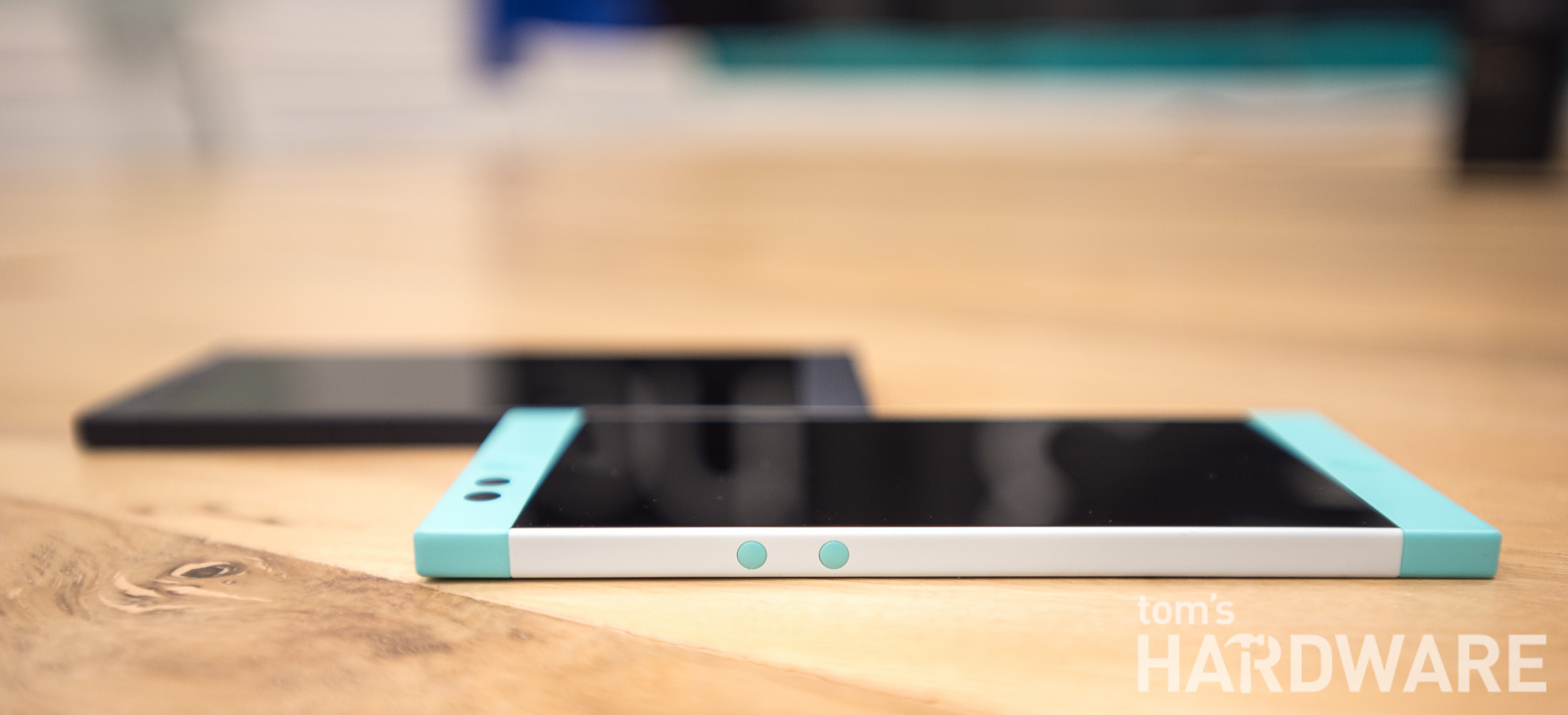The Nextbit Robin 'Cloud' Smartphone, Hands On (Video)
Nextbit wants to save you from your phone. Its first device, the Robin, is an attractive smartphone with sharp lines and bold colors that stand out in the current pack of phones that resemble aluminum soap bars. Launched with a $1.35 million Kickstarter, it’s not just the Robin’s looks that are unique; it’s the specialized fork of Android, 100 GB of cloud storage and advanced backup features that the phone comes packed with.
We visited Nexbit’s San Francisco office to learn more about the Robin and get a look at a design-verification test (DVT) prototype of the phone. It’s not a production-ready model, but it should be close.
The Robin is a distinctively designed smartphone with the internal specs we’d expect in the current wave of high-spec’d, mid-priced Android phones.
It’s the advanced cloud features that Nextbit execs Scott Croyle and Mike Chan hope will make the Robin stand out. Chan worked on Android for years, developing power management and performance features for versions 1.0 through Honeycomb (3.0). He co-founded Nexbit with another Google alum, Tom Moss, who was head of business development for Android. Croyle was SVP of design and UX at HTC and helped create some of the most celebrated HTC phones -- the Evo, and the One M7 and M8.
MORE: Nextbit Addresses Privacy Questions, Provides Additional 'Robin' Smartphone Specs
Forget the Cloud, What’s in the Phone?
For $399, you get a 5.2” 1080p IPS display with a Snapdragon 808 processor, 3 GB of RAM and a 13MP Samsung ISOCELL camera with dual tone flash, all packaged in that bold, boxy design that comes in either mint green or slate gray. The strong lines and blocks of color are reminiscent of some modular phone prototypes, though this isn’t an upgradeable device. The body is high strength polycarbonate and proves that plastic doesn’t have to feel cheap.
There are two device models, one for Sprint/Verizon (CDMA) and one for AT&T/T-Mobile (GSM). A 2680 mAh battery (similar in size to current ~5” phones like the Galaxy S6, Xperia Z5 and HTC One M9) should keep the Robin chugging all day.
Get Tom's Hardware's best news and in-depth reviews, straight to your inbox.
The Robin sports a fingerprint reader cleverly built into the sidebar power button. The standard Android notification light oddly flanks the USB 3.0 Type-C charger on the bottom, and four specialized notification lights adorn the cloud-shaped Nextbit logo emblazoned on the back. The Robin comes with 32 GB of onboard storage, and then there’s the matter of that 100 GB cloud.
| Header Cell - Column 0 | NextBit Robin |
|---|---|
| Display | 5.2-inch IPS LCD @ 1920 x 1080 (423 PPI), Gorilla Glass 4 |
| SoC | Qualcomm Snapdragon 808 (MSM8992) |
| CPU Core | ARM Cortex-A57 (2x @ 1.82 GHz) + ARM Cortex-A53 (4x @ 1.44 GHz) [big.LITTLE] |
| GPU Core | Qualcomm Adreno 418 @ 600 MHz |
| Memory | 3 GB LPDDR3 |
| Storage | 32 GB onboard / 100 Gb online |
| Battery | 2,680 mAh, non-removable |
| Front Camera | 5 MP, Samsung 5E2 sensor |
| Rear Camera | 13 MP Samsung 3M2XXM5 ISOCELL sensor, f/2.2 25.3mm (35mm equivalent) lens, PDAF, dual tone LED flash. 4K video support |
| Connectivity | Wi-Fi 802.11a/b/g/n/ac (2.4 and 5 GHz dual-band), Bluetooth 4.0 LE, NFC, 4G LTE Cat 4, USB 3.0 Gen1 SuperSpeed (5 Gbps) with Type-C connector |
| Special Features | Dual front-facing stereo speakers, fingerprint scanner, Qualcomm Quick Charge 2.0 |
| OS | Android Marshmallow with NextBit Smart Storage Solution |
| Materials | Aluminum, Plastic (glass-filled polycarbonate) |
| Size & Weight | 149 mm x 72 mm x 7 mm, approx. 150g |
Head In The Cloud
Nextbit runs a modified version of Android Marshmallow. It’s not a drastic redesign, but you’ll notice the changes right away. The Robin’s software retains the bottom shortcut bar, but the app drawer is done away with in favor of an all-apps layout similar to iOS. Widgets are relegated to their own screen, which pops in from a pinch gesture, or a long-press on the overview button. There’s also a new, persistent blue shortcut in the lower right that accesses the Robin’s special cloud features.
The Robin’s software is built around making sure you always have enough storage. As you interact with the phone in daily use, the Robin builds a profile of your habits and preferences. As you get close to the 32 GB storage limit, it will start to unload apps you rarely use and back them up to your cloud storage. The same goes for old or seldom-viewed photos: Robin will produce a small, screen-res copy (1920x1080) and back the original up to the cloud. This process happens only while the phone is plugged in, on Wi-Fi (though you can alter that through your preferences). The notification lights on the back let you know if the Robin is currently syncing to the cloud.
As apps are unloaded and sent to the cloud, they turn gray, showing that they aren’t immediately accessible. If you want to use an offloaded app, the Robin saves all your login and account information, and you can quickly re-download it and jump right back into using it. This is partly for security -- secure credentials aren’t transmitted off the device -- and partly to speed up the re-installation process.
“When you log in to Nexbit, you can use your Google account,” said Chan, “So if you want to use two-factor authentication, you can do that as well. For apps like Spotify and Facebook, those credentials don’t actually leave the phone -- we only archive the APK itself. You can pick up where you left off, seven months ago.”
You can also drag across app icons to pin apps you never want to offload, or use the options in the three-dot menu to view which apps have been sent to the cloud. Pictures will appear unchanged unless you try to zoom in, at which point the Robin will re-download the original file and replace the screen-resolution proxy.
Croyle and Chan insisted that in testing, users rarely tried to use apps that were offloaded. “We’re taking off apps that you might not have used in six or seven months. So the chances of you actually hitting that [app] are very very small if we do our job well.”
Bottling Lightning
The system seems like an efficient one, and would certainly alleviate some users’ storage woes, but a few questions remain. It would seem that one solution would be to simply make an affordable 128 GB phone.
“I don’t think most people want to pay for 128 GB,” Croyle said, “That’s the why 16 GB iPhone is still the most popular SKU out there, and it’s unfortunate because it becomes a feature phone in a few months. We think the cloud is the best way to scale the business.”
Chan also claimed that 128 GB of storage would make the device too expensive and would lock people to one model, whereas their cloud solution can be tweaked or scaled if it turns out users need more storage. “We’re not trying to monetize the cloud storage. What we want is just to build a phone that won’t run out of space. And if we need to bump that space up for our user, we can do that, but we can’t go back … and put in a 256 GB chip.”
It may be true that a 128 GB phone might be more expensive, but flash storage is relatively cheap, and running and maintaining a complex cloud backup system isn’t exactly free, either. The only logical assumption is that Nexbit expects the average user to use just a fraction of their available 100 GB of storage.
The other issue is that the system currently backs up and offloads only pictures and apps. I have to wonder for how many people these are the problem files filling their devices. The last three people I helped out with full devices were clogged with downloaded music and cached podcasts, not apps, and the last time I accidentally filled a device, it was with comics and video files. Nexbit is hoping to add cloud support for video files in the next few months and said it will listen to the community for requests for other file formats.
But how necessary even is all this specialized backup? On Android phones, Google Photos now can be set to back up all your photos and videos for free. Additionally, Photos makes it easy to free up space by deleting device copies, leaving your online pics intact. In the era of iCloud hacks, some users have also become justifiably cautious about syncing pics and data to cloud services. And purchased apps from the app store… well, it’s a little unclear to me how offloading the app to cloud storage is all that different from uninstalling an app, and reinstalling it later when I need it.
It seems what Nextbit is banking on is user laziness. There has to exist a set of users who are tech-savvy enough to use a device like this, but hands-off enough that they don’t want the hassle of monitoring device storage, and would rather a third party software system took care of it for them. There’s something to be said for systems that just work without user intervention, but it feels like we’re nearly there already, even if it takes multiple apps to pull off.
Croyle and Chan said that they intend to expand the system to other types of data as they see the need for it in the real world, and I hope they do. The Robin would be much more appealing if it really could fulfill the dream of letting your phone tap into a massive cloud media library, but just bothering with apps and photos feels like a bandaid solution.
That said, I still want Robin to be a smashing success. If nothing else, it is something different in a sea of increasingly same-y Android devices. If Nexbit can offer a top-notch Android experience for $399, then I honestly don’t care whether it comes with cloud storage or not.
The Robin is currently available to pre-order, and the first phones should be shipping in late January 2016.
Follow us @tomshardware, on Facebook and on Google+.
-
Mac266 So I'll download apps, and then the phone will un-download apps and then when I want to use them I'll have to re-download then. Brilliant. Who came up with this?Reply -
tiagoluz8 Reply17238225 said:So I'll download apps, and then the phone will un-download apps and then when I want to use them I'll have to re-download then. Brilliant. Who came up with this?
You didn't get it.
You install the app, configure and use it. You keep doing that until you run out of your 32GB of internal storage. Then the phone will pick the least used apps and archive them to the 100GB cloud, so you can have space for more apps and stuff. When you decide to use one of those archived apps the phone re-donwloads it just like it was before archiving, fully configured. -
Mac266 Reply17239284 said:
You didn't get it.
You install the app, configure and use it. You keep doing that until you run out of your 32GB of internal storage. Then the phone will pick the least used apps and archive them to the 100GB cloud, so you can have space for more apps and stuff. When you decide to use one of those archived apps the phone re-donwloads it just like it was before archiving, fully configured.
Oh I understand it perfectly. Actually no, I don't understand it.
"Least used apps"
Any app that doesn't get used is uninstalled. So my least used apps are still getting used at least once every two days. If it removes 2 1.5 GB apps, it'll hit you with the data charges, and the time, to re-download them. I don't see how this helps. -
cschodt Reply17239839 said:
Oh I understand it perfectly. Actually no, I don't understand it.
"Least used apps"
Any app that doesn't get used is uninstalled. So my least used apps are still getting used at least once every two days. If it removes 2 1.5 GB apps, it'll hit you with the data charges, and the time, to re-download them. I don't see how this helps.
It only archives the apps when on wifi and power. Removing them to clear space doesn't take any data, and it makes clear which apps have been archived by graying them out. It also warns you about data usage if you try to re-install one of them when not on wifi.
If you have filled a phone with 32 GB of apps, all of which you use daily, then yes, this would not work for you.
-
mrmez It could be a clever trick depending on how it's implemented.Reply
Instead of saying "Not enough space to install this app, go fk yourself"
If it said "Not enough space, would you like to archive ?"
That would be handy. -
targetdrone I rather have on-board 128GB mSDXC than trust anything to the cloud.Reply
Why? T-Mobile/Microsoft/Danger Cloud crash. That's why. -
mrmez Nothing is immune, but you're far more likely to lose your phone than have a cloud service lose your data.Reply
And IRL, very few people plug their phone into a computer and sync it every day.
A good phone/service will sync and backup all data automatically every day. -
firefoxx04 Who has 20+ GB of apps?Reply
I have tons of apps and it takes next to no space. Media is what takes space... If you dont want to stream, cloud does not work. -
mrmez 20Gb is a LOT for apps, but still... better too much than too little.Reply
I can't do without the Apple cloud service these days.
Apart from automatic backups, syncing data across my phone, ipad, and macs is awesome.
It's great taking a photo on my phone, then moments later finding it on my ipad and mac.
Add contacts, documents etc to the mix and the cloud is compelling.
Biggest by far is messages (sms and imessage). It's seamless between all devices, weather they have a sim card or not.
